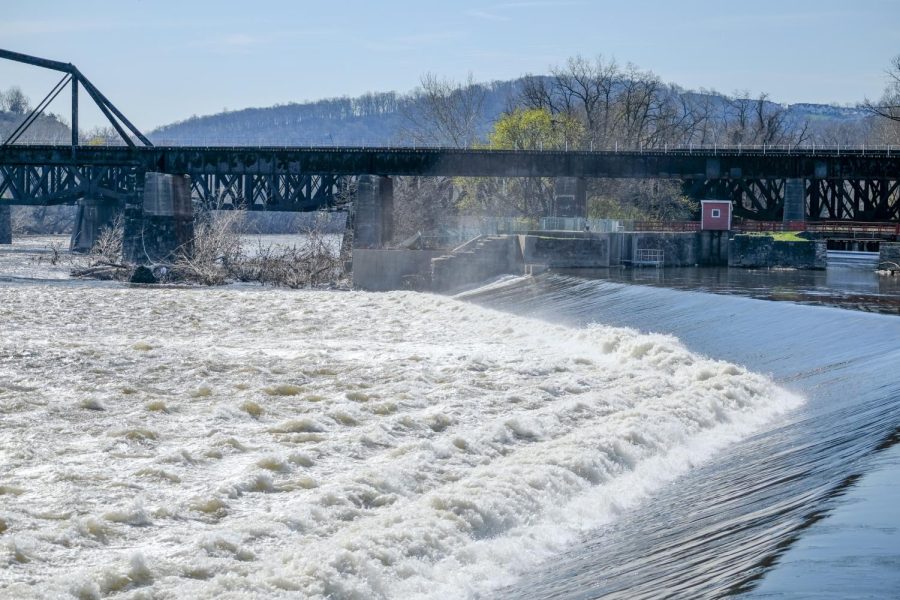Professors and students have tried for years to remove the dams along Bushkill Creek to improve the aquatic environment. Faced with financial and logistical obstacles, professors hope that by next year the project can finally get underway.
According to Biology Professor Megan Rothenberger, there are three dams along the Bushkill Creek, which stretches for 22 miles before merging with the Delaware River at Easton. Along the lowest three miles of the creek are the dams that were once utilized for water-powered mills, according to the Bushkill Stream Conservatory website.
Geology Professor Dru Germanoski said the dam removal project would begin sometime in 2023, with each dam projected to take three to four weeks to remove and restore.
“All designs have to be approved by our college and the city of Easton,” Economics Professor Hongxing Liu said.
Liu said that the main group organizing the project to remove the dams is Wildlands Conservancy, an environmental non-profit organization located in Pennsylvania. She also stated that Princeton Hydro was in charge of the technical details in regard to the removal and conservation of the creek.
“Many professors, including Professor Rothernberger, Professor Germanoski, [Civil and Environmental Engineering] Professor Brandes and myself have involved students in the dam removal projects in the past decade,” she added.
Liu said she had worked with three former students on the dam removal project, too, with her only regret being that they graduated before they got to see the removal happen.
Germanoski said that the impetus for the project to remove the Bushkill Creek dams began on August 12, 2005, when a fly ash release from the Mount Creeks thermo-electric power station upstream of Easton caused as much as 100 million gallons of ash slurry to wash into the Delaware River, damaging freshwater mussel beds downstream.
As a result of the settlement between the Pennsylvania Department of Environmental Protection and Talen Generation LLC, the corporation that owned the power plant, money was directed to stream rehabilitation.
“As part of the settlement [for the damage], money was directed to a number of dam removal projects in several tributaries of the Delaware River to reconnect the lower portions of the watersheds to the trunk river to facilitate re-establishment of mussel communities in the tributary streams,” Germanoski explained.
Environmental protection, which is related to the protection of aquatic wildlife and avoiding the buildup of sediment in the creek, is a key goal of removing the dams.
One example of environmental damage that the project is trying to prevent is the significant harm mussel communities face as a result of the dams along the Bushkill. According to Germanoski, the dams prevent the fish to which mussel larvae attach themselves from migrating to new colonization areas throughout the Bushkill and the Delaware River.
“Trout and shad will be able to move from the Delaware [River] into the Bushkill to spawn every year and hopefully carry mussel larvae into that creek,” Germanoski said.
“Also, trout are stressed by higher water temperatures in some sections of the creek when temperatures rise in the summer, and those trout will be free to move along the creek to locations where cold groundwater seeps into the creek from subsurface springs,” he said.
The project also promises opportunities for other types of research.
“[The dam removal movement’s] work focuses on the biological and hydrological impacts of dam removal, but I also think it’s interesting to see the socio-economic impact,” Liu said.
Liu explained that one of her research areas was non-market evaluation, or “putting a dollar value on things that are not traded in an open market, such as water or air.”
Liu said that through her research, she hopes to estimate the value of water quality change, fishing activities and other recreational behavior that would result from removing Bushkill Creek’s dams.
“Unfortunately, the project has been delayed again due to insufficient funding. I do hope to gather pre-removal and post-removal data, which means that I will have to wait at least a couple years after the removal to finish the project,” Liu said.





































































































